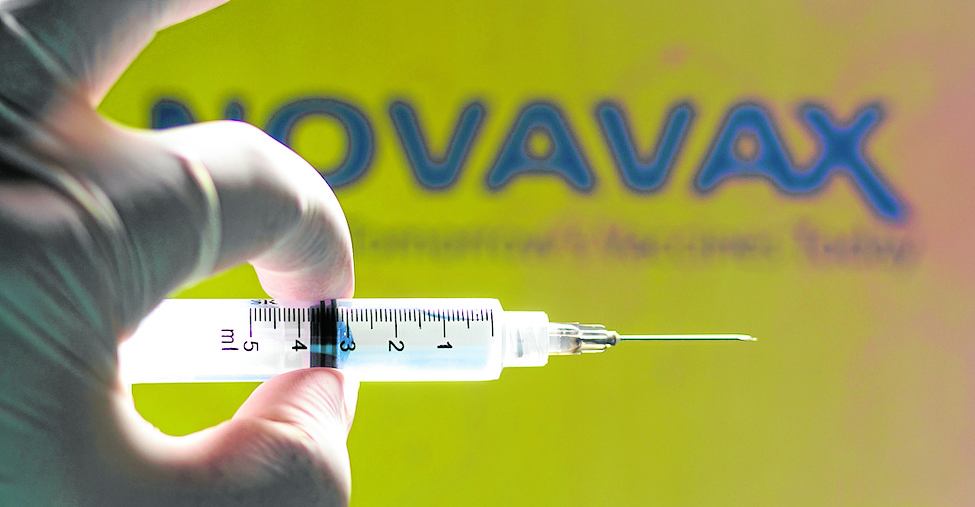
Public Attorney’s Office (PAO) chief Persida Rueda Acosta stirred up a hornet’s nest a few weeks ago by admitting publicly that she is not vaccinated against COVID-19. She said, though, that she’s willing to be vaccinated when the right type of vaccine comes along, and for her, it’s a “protein-based vaccine.”
She must have done her own research, or taken some advice from her PAO doctors that this type of vaccine has an edge over the others in terms of short- and long-term safety. We can’t be sure about its effectiveness, though, since clinical trials were done when the old variants were prevalent; the omicron variant apparently has changed the rules of the pandemic. Some people have been asking us what this vaccine is.
She didn’t mention any particular brand or manufacturer, and there are several protein-based vaccines currently in development, but the brand which is in the advanced stage of clinical trials is the Novavax COVID-19 vaccine.
In fact, several countries, including the Philippines, have already granted emergency use authorization (EUA) to Novavax, but the manufacturer seems to be having problems with production. The Philippine Food and Drug Administration granted it EUA in November and, hopefully, stocks will be available here by the second quarter of the year, if we already made an advance order for it.
Highly effective
Australia has started rolling it out and the initial feedback, at least, is that it’s well-tolerated. There’s good reason for people to be more comfortable with it because it’s based on an old, tried-and-tested technology, similar to that used for the flu shots and vaccination for pertussis (whooping cough), meningococcal infection and hepatitis, which have been established for several decades now.
In clinical trials, the Novavax vaccine has been shown to be highly effective, except that it was against the old variants. It’s also more suitable for developing countries like ours because it does not require special subzero storage conditions, which the mRNA vaccines (Pfizer or Moderna) need. It remains stable at refrigerated temperatures (2 to 8 degrees centigrade), making it easier to transport and store even in rural settings.
Although the Novavax vaccine is a bit of a Johnny-come-lately in the vaccination world, it might just be able to address the still widespread global hesitancy against COVID vaccination. The established track record of the technology it uses is more reassuring, compared to the novel mRNA or adenovector technologies of the Pfizer, Moderna, AstraZeneca and Janssen vaccines, the long-term effects of which are still a big question mark.
With requirements for boosting, there is a global problem with distribution and supply, and the more affluent nations are believed to be hoarding their vaccines. So, a broader range of safe and efficacious, hopefully more affordable vaccines is always most welcome.
Based on a published phase 3 clinical trial in adults, conducted before the Delta and Omicron variants became dominant, two doses of the vaccine can prevent nine in 10 cases of laboratory-confirmed symptomatic infection. It had a 100-percent effectiveness against moderate and severe disease.
Serious and severe side effects were reported to be rare in the clinical trial, and they were present in both the vaccine and placebo groups. The most common vaccine side effects reported were headache, nausea or vomiting, muscle or joint pain, injection site pain, and feeling tired or generally unwell.
Spike protein
Novavax is actually the name of the American biotechnology company which manufactures the vaccine, in collaboration with the Coalition for Epidemic Preparedness Innovations. It contains purified bits and pieces of the SARS-CoV-2 spike protein, combined with an adjuvant that also stimulates the immune system.
How are the spike proteins produced? Genetic instructions for producing spike proteins are injected into a different virus called a baculovirus, which are then used to infect moth cells. It’s the moth cells that produce the spike proteins, which are then harvested and purified. These purified proteins are then assembled into nanoparticles to closely resemble the molecular structure of SARS-CoV-2. The adjuvant mixed with it comes from saponin, which is extracted from soapbark trees. Once inoculated to the body, it attracts immune cells and causes them to produce antibodies and memory cells to remember the virus once encountered.
Novavax has transferred the manufacturing technology of the vaccine to the Serum Institute of India, which is now licensed to mass manufacture it. The brand names are Nuvaxovid and Covovax. The Strategic Advisory Group of Experts on Immunization of the World Health Organization has recommended that the vaccine, just like the others, be given as two doses three to four weeks apart. For severely immunocompromised individuals, an additional dose of vaccine after three months may be given, which is the same recommendation for the other vaccines.
So, the Novavax vaccine does not make the body produce the spike protein, which may possibly happen uncontrollably. This is the main apprehension now with the mRNA vaccines.
It was the assumption with the mRNA vaccines that they would only remain localized in the area where it was injected—in the shoulder muscle—and shortly thereafter, once the immune reaction has been completed, it would be degraded. There are some reports now that the inoculation actually gets into the circulation and distributed to different parts of the body, and the instruction to the cells to manufacture spike proteins persist for quite a long time, much longer than it was originally assumed.
Real culprit
The concern is that spike proteins are actually the real culprit causing the damage to all the organs of the body because of its effect in the blood vessels supplying the organs. The complication may not happen immediately but weeks or months after the vaccination, so in most instances, they are not attributed anymore to the vaccination.
That’s true, it’s difficult to prove that these sudden heart attacks and strokes in the young, and even sudden deaths in athletes, are vaccine complications, but since we’ve not seen this phenomenon in the pre-COVID vaccine era, we have to start asking questions and stop dismissing these serious complications as due to anything under the sun, except to the vaccination.
It may be true that these potentially deadly complications may also be due to COVID-19 infection, except that many of these cases, including sudden death cases, have never been diagnosed to have had COVID-19 recently or in the past. The more consistent factor in some reports is that they have a history of vaccination. The temporal relationship does not necessarily point to a cause-and-effect relationship, but it at least warrants some investigation and an abundance of caution not to proceed with vaccination in low-risk groups such as healthy children and young adults.
Acosta may not realize it, but she has apparently caused a big number of vaccine-hesitant individuals to look forward to this protein-based vaccine, which may provide a good balance between potential harm and long-term safety and efficacy.













































